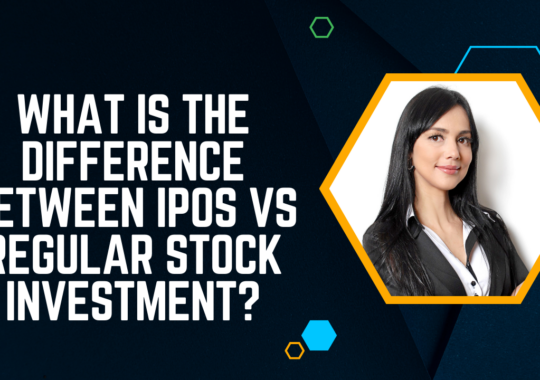Deciding when to invest in an Initial Public Offering (IPO) is a nuanced challenge that demands a keen understanding of market dynamics and individual investment objectives. The allure of being an early participant in a company’s public journey is tempered by the complexities of timing, risk assessment, and the need to align investments with broader financial strategies. In this exploration, we delve into the considerations that surround determining the right time to invest in an IPO, examining the factors that influence market entry decisions and offering insights for investors seeking to navigate the dynamic landscape of new public offerings.

Understanding IPO Dynamics: Factors Influencing Market Entry
Investing in an Initial Public Offering (IPO) requires a nuanced understanding of the dynamic factors that influence the opportune moment for market entry.
Market Sentiment and Timing
Market sentiment plays a crucial role in determining the right time to invest in an IPO. Assessing the overall mood of the market, gauging investor enthusiasm, and understanding broader economic conditions are pivotal. Timing the entry to align with positive market sentiment can enhance the chances of a successful IPO investment.
Company Fundamentals and Growth Prospects
A comprehensive analysis of the issuing company’s fundamentals is imperative. Examining financial health, growth prospects, and industry positioning provides insights into the potential for future success. Investors often favor companies with strong fundamentals and robust growth trajectories, enhancing the attractiveness of an IPO.
Industry Trends and Economic Conditions
The industry landscape and prevailing economic conditions significantly impact IPO performance. Industries experiencing growth or disruption may present attractive investment opportunities. Furthermore, economic stability and conducive market conditions often contribute to favorable IPO outcomes. Investors keen on IPOs must stay attuned to broader economic trends to make informed decisions aligned with industry dynamics.
IPO dynamics is essential for strategically timing market entry and maximizing the potential for returns in this exciting yet unpredictable realm of the stock market.
Strategic Considerations: Aligning Investments with Financial Goals
Investing in Initial Public Offerings (IPOs) necessitates a strategic approach that aligns with individual financial goals and risk tolerance.
Risk Tolerance and Investment Horizon
An investor’s risk tolerance is a critical factor in IPO decisions. Assessing the level of risk one is comfortable with helps determine the suitability of a particular IPO investment. Additionally, aligning investment decisions with a predefined investment horizon—whether short-term or long-term—guides strategic choices and mitigates potential uncertainties.
Portfolio Diversification and IPO Exposure
Diversification is a key principle in investment strategy, and IPOs should be viewed within the context of an overall diversified portfolio. Striking a balance between exposure to IPOs and other established assets helps manage risk. Investors must evaluate how IPOs complement their existing holdings to achieve a well-rounded and resilient portfolio.
Regulatory and Lock-Up Period Awareness
Navigating the regulatory landscape is crucial for IPO investors. Understanding the implications of lock-up periods, during which insiders are restricted from selling their shares, is vital. Investors need to be aware of how these regulations might influence the stock’s liquidity and overall market dynamics.
Market Timing Strategies: Seizing Opportunities Amidst Volatility
Successfully navigating the intricate landscape of Initial Public Offerings (IPOs) demands adept market timing strategies, particularly in the face of market volatility.
Identifying Optimal Entry Points
Discerning the right time to enter an IPO involves a careful analysis of market dynamics. Investors often benefit from monitoring pre-IPO market conditions, evaluating the timing of the offering, and identifying periods of relative market stability. Optimal entry points can maximize potential returns while mitigating the impact of short-term market fluctuations.
Monitoring Pre-IPO Buzz and Post-IPO Performance
The period leading up to an IPO is characterized by anticipation and speculation. Monitoring the pre-IPO buzz, assessing investor sentiment, and scrutinizing the performance of similar offerings provide valuable insights. Post-IPO, observing how a company fares in the market, understanding its resilience in the face of volatility, and analyzing historical IPO trends contribute to informed decision-making.
Balancing FOMO (Fear of Missing Out) with Prudent Decision-Making
While the fear of missing out (FOMO) can drive impulsive investment decisions, a strategic approach involves balancing enthusiasm with prudence. Investors must resist the urge to chase trends and carefully assess the risk-reward profile of each IPO. A measured strategy, grounded in market analysis and a clear understanding of individual investment goals, helps avoid unnecessary exposure to market volatility.
Case Studies and Lessons Learned: Insights from Past IPOs
Drawing insights from past Initial Public Offerings (IPOs) provides valuable lessons for investors seeking to navigate the complexities of the stock market.
Success Stories and Timing Strategies
Examining successful IPOs unveils patterns and strategies that contributed to their positive outcomes. Analyzing the timing of market entry, understanding the company’s fundamentals, and evaluating industry trends offer valuable insights. Success stories often highlight the importance of a well-informed, strategic approach to IPO investments.
Cautionary Tales and Lessons for Investors
Conversely, cautionary tales shed light on pitfalls and challenges that investors may encounter. Instances of overvaluation, inadequate due diligence, or market misjudgments underscore the importance of thorough research and risk management. Learning from these experiences helps investors refine their strategies and avoid potential pitfalls in future IPO investments.
These insights contribute to a more informed and resilient investment strategy, allowing investors to capitalize on opportunities while minimizing risks in the ever-evolving landscape of initial public offerings.
Conclusion: Crafting a Timely and Informed IPO Investment Strategy
In conclusion, crafting a successful IPO investment strategy requires a nuanced blend of market awareness, strategic timing, and adherence to individual financial goals. By understanding the dynamics of market sentiment, aligning with risk tolerance, and drawing insights from both successful and cautionary IPO tales, investors can navigate the intricate landscape with confidence. Balancing enthusiasm with prudence, strategic market timing, and continuous learning from past experiences contribute to the crafting of a timely and informed IPO investment strategy. In this dynamic environment, a well-considered approach enhances the potential for success and positions investors to seize opportunities while managing risks effectively.
Also Read:
- Investment Taxation: Understanding Capital Gains, Dividends, and More
- The Impact Of Inflation On Investments
- What is the safest way to reduce investment risk?
- What are the major four assets of an investor portfolio?



